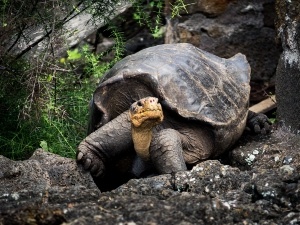
Any change in your pet turtle’s shell, any signs of collapsing, caving in, pyramiding, or anything like that, will be quite concerning and worrying to you as the reptile’s owner
This article looks into why your turtle’s shell may be caving in
Table of Contents
Why is my turtle’s shell caving in?
The shell is a critical protective mechanism for turtles, not only does it protect against predator attacks but the shell also keeps the animal’s internal organs safe and sound, so any issues with the shell will concern you
This article looks into why your turtle’s shell may be caving in
Diet:
One of the reasons why your turtle’s shell may be caving in may be because of the animal’s diet.
A diet that is not appropriate for your type of turtle, or a diet that does not have the right balance of vitamins and minerals, will cause your pet to suffer ill health effects, a shell caving in is one of them
You could be feeding your pet too much food and its shell could be growing fast but this too-fast growth may be what’s causing the shell to cave in as it grows. The same thing can happen if you’re feeding your pet but the proportions aren’t correct.
Turtles in this condition will have a shell that is caved in but the shell will still be hard to the touch when you press on it gently.
What to do:
Adjusting what you’re feeding your pet will get the situation under control, the shell may not go back to looking how it’s supposed to look but a change in diet will cause the shell not to get worse.
When feeding your pet make sure that the animal’s diet is a combination of dark leafy greens like collard greens, kale and mustard greens, carrots, endive, zucchini, water plants, boiled eggs, Mario worms, chicken, small feeder fish, and pellets.
Keeping cuttlebone in the tank is also recommended. Remember to remove the hard backing off of the cuttlebone before feeding it to your turtle
Don’t worry if your pet doesn’t want to eat some of the food that’s good for them, this is normal, just be patient and replace the old food with fresh food every day, your pet will eat it when it gets hungry.
Metabolic bone disease:
Another of the reasons why you may see caving in when it comes to your pet turtle may be because the animal is suffering from a condition called metabolic disease.
This condition develops because of a combination of poor nutrition (namely a low vitamin D diet, low calcium diet, or high amounts of phosphate in the animal’s diet), and inadequate amounts of UV light exposure which can in turn lead to calcium deficiency or kidney disease.
Other signs of this condition in your pet include general weakness, tremors, seizures, reproductive problems, reduced appetite, and soft bones
What to do:
You can test to see if the animal has metabolic bone disease by gently pushing on the shell. If there is some give in the area then this is a sign that the bones are soft and the reptile animal has metabolic bone disease
If you think that your turtle has metabolic bone disease then you’d need to get your pet to the vet, this is not something that can be treated at home. The vet will examine your pet, run bloodwork, and give you a diagnosis and treatment options.
If you enjoyed this article then you may also be interested in other turtle/tortoise related articles. Here are some articles that you may be interested in: Why Is My Turtle’s Shell Turning Blue?, Why Does My Turtle’s Shell Look Cracked?, Why Is My Turtle’s Shell Breaking?, Why Is My Turtle’s Shell Shiny?, Why Is My Turtle’s Shell Turning Green?, Why Is My Turtle’s Shell Squishy?, Why Is My Turtle’s Shell Dented?, Why Is My Turtle’s Shell Getting Darker, Why Is My Baby Turtle Not Growing?

